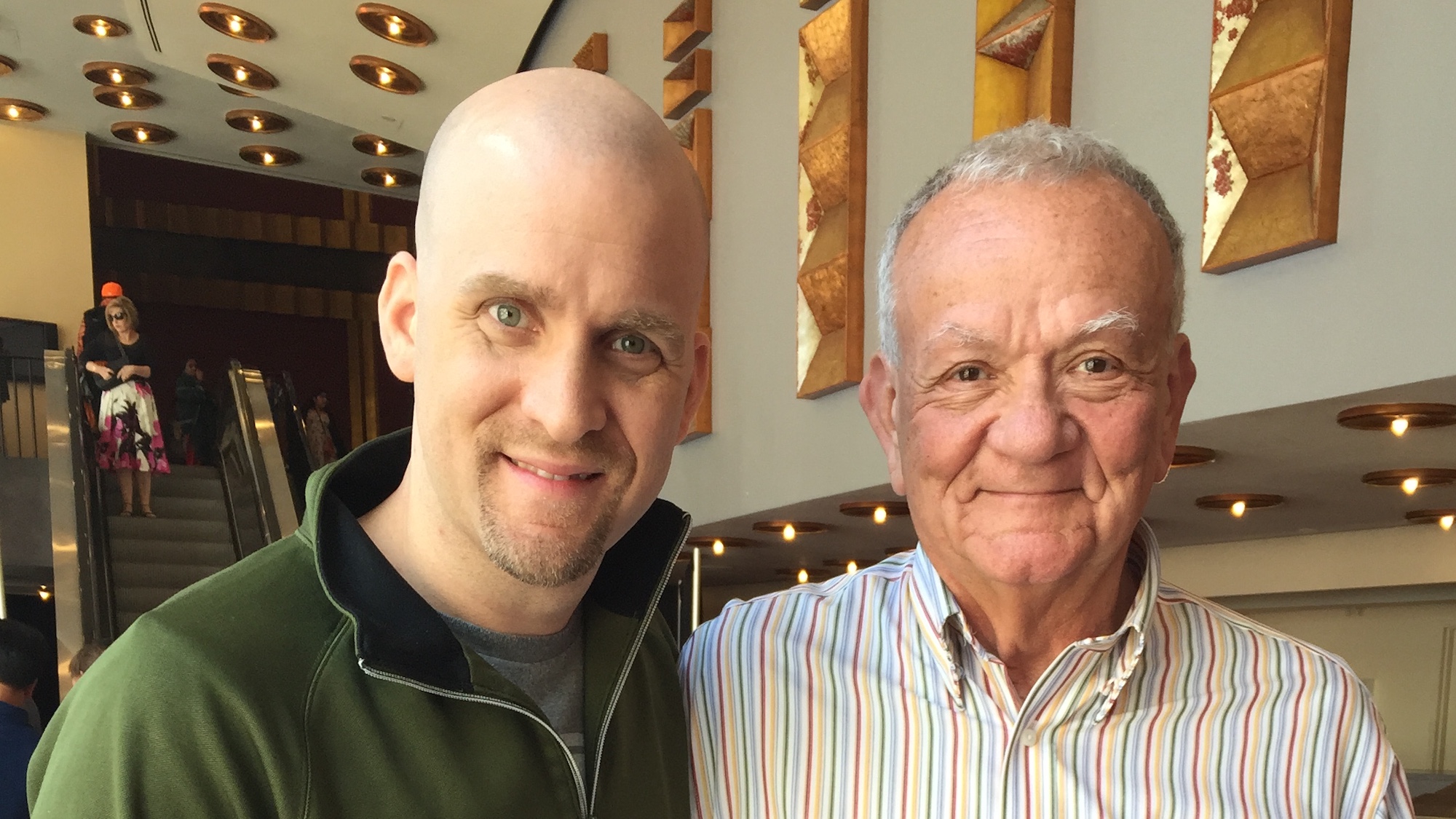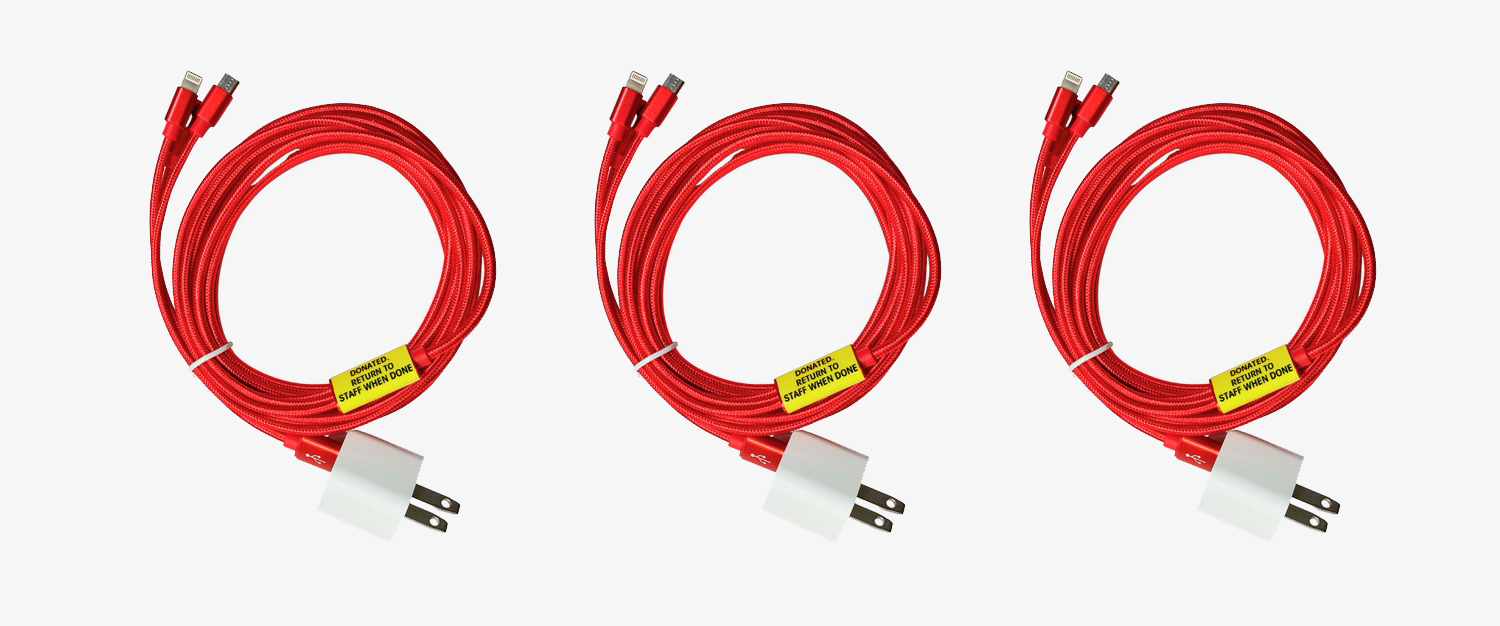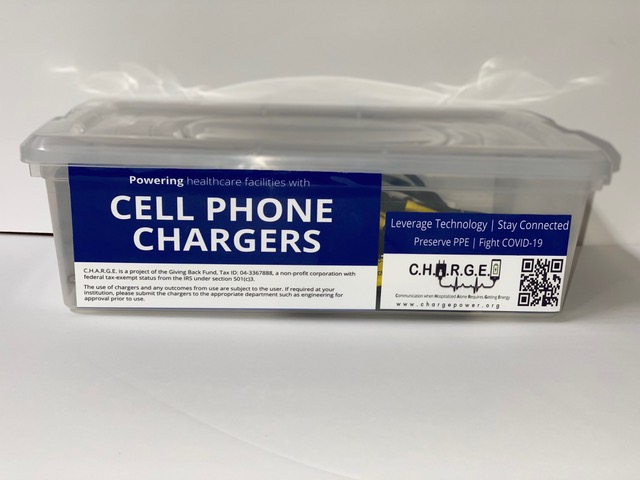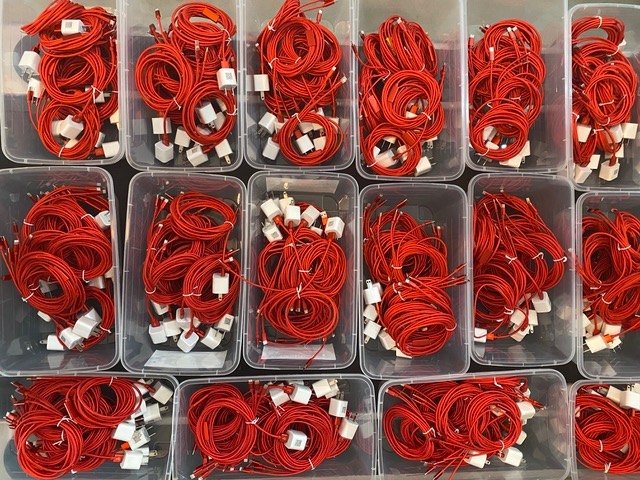How a cell phone charger helped save a Covid patient's life
One man’s need to talk to his family inspired a nonprofit to deliver phone chargers to Covid patients

In March at the beginning of the coronavirus pandemic, 77-year-old Dr. Steven Hefler began to feel ill after returning to Florida from San Diego. Little did he know that he was going to spend 49 days in the hospital — 23 of them on a respirator. What’s more, he had no easy way to contact his family, as his smartphone had run out of power.

Most of the time, a dead smartphone is a minor inconvenience, as we’re often not far from an outlet or a portable charger. Or, it’s a simple matter of swinging into a convenience store to pick up a spare charger.
However, when you’ve got to rush to the hospital for urgent COVID-19 treatment, you don’t always have the time to gather up belongings you might need — including a charger for their smartphone. And, because of the viral nature of COVID, in-person visits are discouraged, making voice- and video calls the only way to see loved ones.
That’s just what Dr. Hefler was facing as he was admitted to Sarasota Memorial Hospital. His condition rapidly deteriorated, and he lapsed into unconsciousness for a week in the intensive care unit; doctors had to resuscitate him three times.
Even though he was unconscious, Dr. Helfer’s family wanted to talk to him over his phone, to provide a reassuring and familiar voice. Fortunately, a nurse had a spare charger, which provided a lifeline for Hefler in more ways than one.
“When [my son] Jonathan would call, when my wife would call, my heart rate went up and my blood pressure went up even though I was uncommunicative,” Dr. Hefler said.
When [my son] Jonathan would call, when my wife would call, my heart rate went up and my blood pressure went up even though I was uncommunicative.
Dr. Steven Hefler
“I got my kids on the phone and they yelled at him, ‘don’t give up, keep fighting,” said Jonathan Hefler. When the nurses reported on Dr. Hefler’s improvement, “we started doing that at all hours of the day and night.”
Sign up to get the BEST of Tom's Guide direct to your inbox.
Get instant access to breaking news, the hottest reviews, great deals and helpful tips.
Based on that experience and a desire to do something, Jonathan Helfer realized that there were probably a good many families in the same situation: A loved one in the hospital, and no way to reach them.
While his father was still in the hospital, Jonathan started a GoFundMe page to purchase phone chargers that he could then distribute to hospitals in need. He also partnered with Megan Tress, a nurse practitioner based in Chicago, to find hospitals where they could donate chargers. That page alone raised more than $41,000, which was used to purchase a few thousand chargers.
In early May, Jonathan discovered Dr. Vic Gulati and Dr. Bhavesh Mody, who had been doing something similar in the San Diego area, and the three combined forces to create ChargePower.org, a nonprofit that distributes the chargers to hospitals upon request. Partners include the Giving Back Fund, a national nonprofit organization, and Classy Chargers, the company providing the USB chargers.
As anyone who’s purchased a phone charger in an airport knows, not all chargers are created equal. Diane Attyah, the owner of Classy Chargers, was able to not only source chargers that would work with 99% of all smartphones, but make sure they were packaged properly.
If a doctor or nurse can FaceTime with a patient in a room, then that’s one set of gloves or masks that can be used elsewhere.
Early on, Hefler was simply buying chargers off of Amazon and mailing them to hospitals. At the same time, Attyah’s own business was suffering. As a wholesaler, she was sitting on a huge inventory of phone chargers as most of her customers — local stores — were closed due to the pandemic. So she reached out to Hefler and offered to help.
Attyah’s expertise extended beyond her warehouse of chargers, too. Because of her connections, she was able to source changing cables with three ends — microUSB, USB-C, and Lightning — so that nurses didn’t have to worry about which patient was getting which charger.
After consulting with Dr. Gulati and Dr. Mody, Attyah increased the cables’ length to 10 feet — long enough to reach from the wall to a hospital bed comfortably — label the chargers so that people didn’t take them from the hospital, and package them in boxes with instructions for nurses on how to use them.

“We don’t just send hospitals boxes of loose chargers,” Hefler said. “We send specific types of chargers with all sorts of special stickers and special holding tubs and instructions so that they are easy to use and re-use by any hospital staff.”
Another benefit of the chargers, Hefler said, is that it also helps hospitals save on PPE; if a doctor or nurse can FaceTime with a patient in a room, then that’s one set of gloves or masks that can be used elsewhere.
According to Hefler, Charge Power has distributed more than 10,000 chargers to 87 hospitals across the country. Thanks to a $300,000 donation from Covid Tech Connect in October, Charge Power was able to order an additional 25,000 chargers, which should arrive in the U.S. by late January.

As for Jonathan’s father? He recovered and was released from the hospital on May 15. While he still has some lingering effects, he’s grateful to be “on this side of the dirt.” Of the 18 people in his age group that were admitted to the hospital at the same time as Dr. Hefler, he was one of only two people who left the hospital alive. And while Dr. Hefler wouldn’t wish his ordeal on anyone, he’s thankful that something good came out of his illness.
During his hospital stay, his wife Marsha, kept a journal. Reading it afterwards, Dr. Hefler was struck by the toll the virus has taken not just on those infected, but by their loved ones.
“The people who are on the outside are the ones who are really suffering,” Drl Hefler said, “So this charger business is truly a godsend, and I’m so proud of them for thinking about it, realizing it was a need, and making it happen.”
If you’d like to donate to Charge Power or request phone chargers for your hospital or health organization, please go to chargepower.org.

Michael A. Prospero is the U.S. Editor-in-Chief for Tom’s Guide. He oversees all evergreen content and oversees the Homes, Smart Home, and Fitness/Wearables categories for the site. In his spare time, he also tests out the latest drones, electric scooters, and smart home gadgets, such as video doorbells. Before his tenure at Tom's Guide, he was the Reviews Editor for Laptop Magazine, a reporter at Fast Company, the Times of Trenton, and, many eons back, an intern at George magazine. He received his undergraduate degree from Boston College, where he worked on the campus newspaper The Heights, and then attended the Columbia University school of Journalism. When he’s not testing out the latest running watch, electric scooter, or skiing or training for a marathon, he’s probably using the latest sous vide machine, smoker, or pizza oven, to the delight — or chagrin — of his family.
